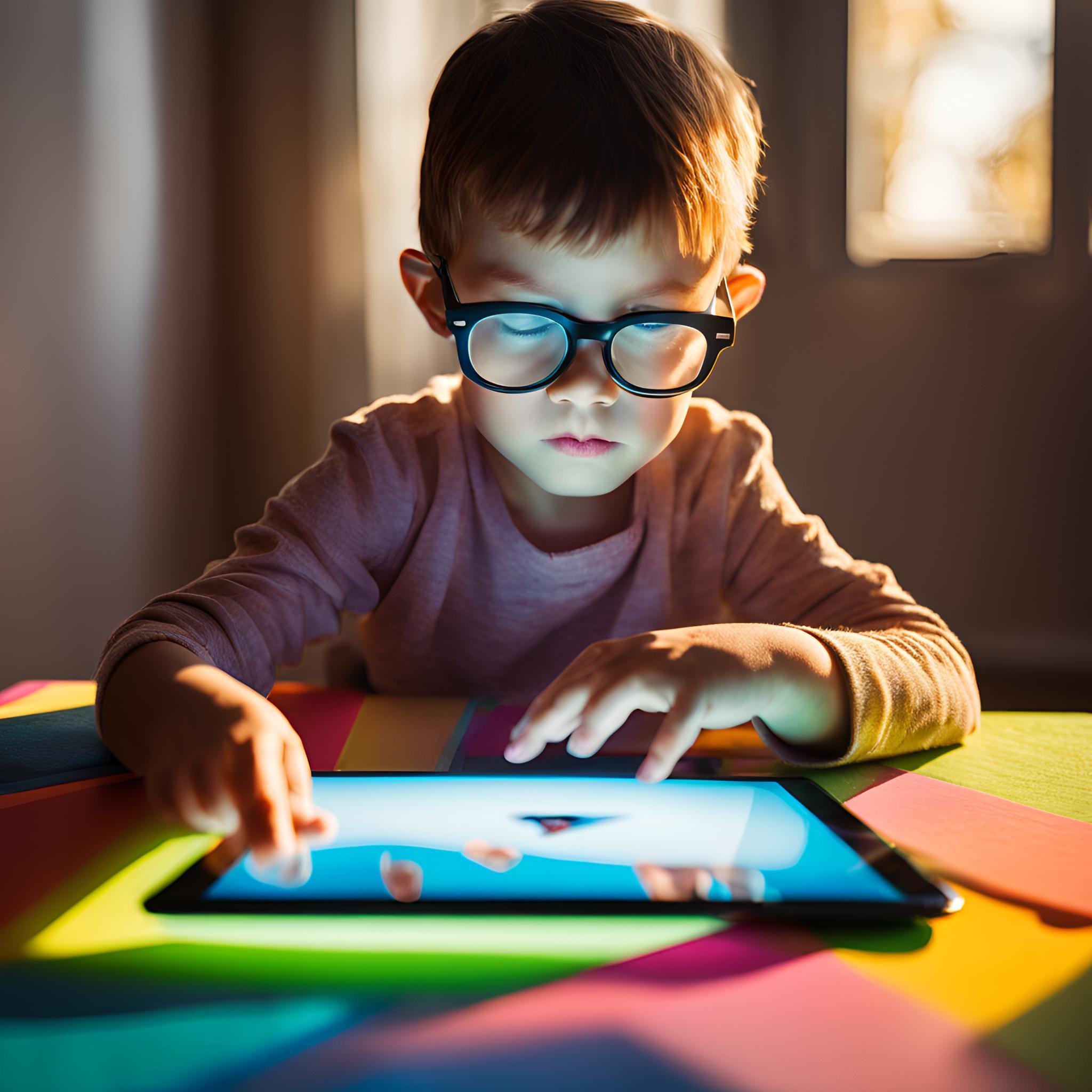Your cart is currently empty!

The Growing Concern of Children’s Screen Time and Its Link to Myopia: A Guide
In today’s digital age, it’s almost impossible to escape the allure of screens. From smartphones and tablets to computers and televisions, screens are an integral part of daily life – especially for children. While these devices offer educational and entertainment value, excessive screen time can lead to several health concerns, including eye strain and, more worryingly, myopia (nearsightedness). As local family opticians, we want to help parents understand the impact of screen time on their children’s vision and offer advice on how to protect their eye health.
What is Myopia?
Myopia is a common refractive error where distant objects appear blurry, while close objects can be seen clearly. It occurs when the eyeball grows too long or the cornea is too curved, causing light to focus in front of the retina rather than directly on it. In the past, myopia was typically a condition that developed in adulthood, but in recent years, more children are being diagnosed with this condition at younger ages.
The Link Between Screen Time and Myopia
Recent studies have shown a significant link between increased screen time and the rise of myopia in children. Prolonged close-up tasks, like reading, writing, or looking at screens, can put excessive strain on the eyes. Children, in particular, are more susceptible to these effects because their eyes are still developing. Here’s why screen time plays such a critical role in the development of myopia:
- Prolonged Near Work: Spending long hours focusing on a screen for close-up activities like gaming, watching videos, or browsing the internet forces the eyes to work harder. This continuous strain can contribute to eye elongation, a key factor in the development of myopia.
- Lack of Outdoor Play: Studies have also shown that children who spend more time indoors, often engaged in screen-based activities, are at a higher risk of developing myopia. Natural light and outdoor activities help the eyes focus on distant objects, promoting healthy eye development.
- Increased Blink Rate and Dry Eyes: Staring at a screen for long periods reduces the blink rate, leading to dry eyes and discomfort. This can make it harder for children to focus and may cause additional strain on the eyes.
How to Protect Your Child’s Eyes from the Effects of Screen Time
As a parent, there are several steps you can take to safeguard your child’s vision and reduce the risk of myopia:
1. Follow the 20-20-20 Rule
Encourage your child to follow the 20-20-20 rule. For every 20 minutes of screen time, take a 20-second break and look at something 20 feet away. This simple habit helps relax the eyes and reduce strain.
2. Limit Screen Time
Set reasonable limits on daily screen time based on your child’s age. The Royal College of Paediatrics and Child Health suggests that children aged 2-5 should have no more than one hour of screen time a day, and children aged 5-18 should have a maximum of two hours of recreational screen time each day.
3. Encourage Outdoor Activities
Make outdoor play a priority. Studies suggest that spending time outside in natural light can reduce the risk of developing myopia. Encourage activities like walking, cycling, playing sports, or simply exploring nature. The National HealthService (NHS) offers great tips for getting kids active and outdoors.
4. Ensure Proper Screen Distance
Make sure your child is sitting at a proper distance from screens. A good rule of thumb is to keep the screen about an arm’s length away and ensure the screen is positioned at eye level. This helps reduce eye strain and promotes good posture.
5. Use Blue Light Filters
Many devices emit blue light, which can contribute to digital eye strain. Using blue light filters or glasses designed to block blue light can help reduce the strain caused by prolonged screen use. Some devices even have built-in blue light settings that adjust the screen’s colour temperature. For more information on how blue light affects your eyes, see this article from The College of Optometrists.
6. Regular Eye Check-ups
Routine eye exams are crucial for detecting myopia and other vision issues early on. We recommend that children have their first eye exam at the age of 3, and then continue with regular check-ups every two years, or as advised by your optician. Early intervention can help manage or even slow down the progression of myopia. To schedule an eye exam for your child, book an appointment with us.
What Should You Do If Your Child is Diagnosed with Myopia?
If your child is diagnosed with myopia, don’t panic. Myopia can be managed with the right approach. Glasses or contact lenses are the most common treatments, but there are also advanced options such as orthokeratology (specialised contact lenses worn overnight) or atropine eye drops, and specialist lenses, such as Essilor’s Stellest, which may slow the progression of myopia in children. Your optician will work with you to find the best solution tailored to your child’s needs.
Final Thoughts
While it’s impossible to eliminate screens entirely in our modern world, it’s essential to create a balance between screen time, outdoor activities, and eye care. By taking simple steps to reduce strain and promote healthy habits, you can help protect your child’s vision and potentially slow the progression of myopia.
At H&S Eyecare, we’re committed to supporting the eye health of your entire family. If you have any concerns about your child’s vision or would like to schedule an eye test, please don’t hesitate to get in touch. We’re here to help!

Children under 16 or young people under 19 and in full-time education receive a free NHS eye test and optical voucher
Disclaimer: This post is intended for informational purposes only and is not a substitute for professional medical advice. Always consult with an optometrist or eye care professional for specific concerns about your child’s eye health.
